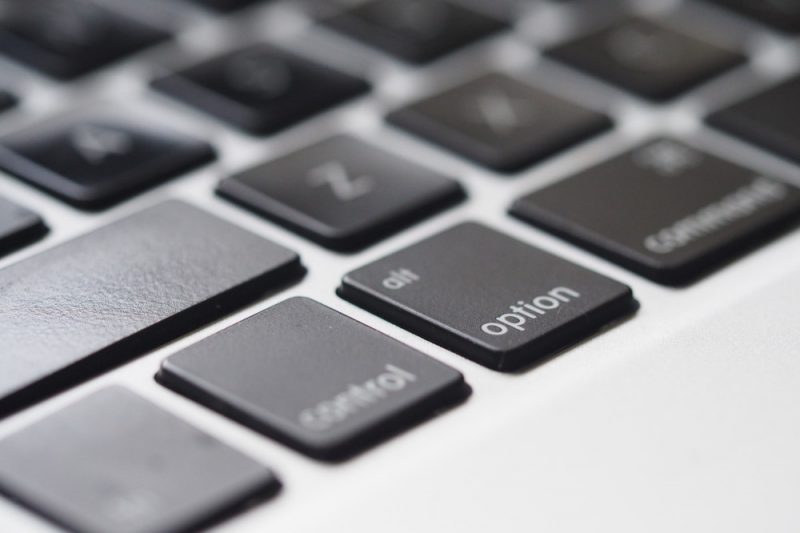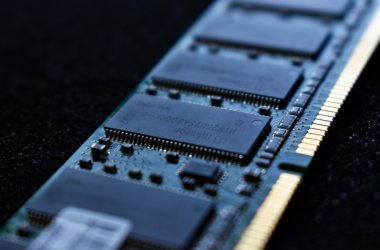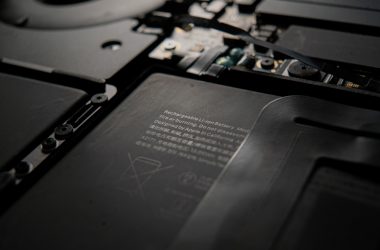Laptop keyboards, and the accompanying touchpad, of course, are some of the most finicky components of a laptop to preview when trying to buy one.
You are almost always never able to assess them properly by just looking at a product page. Even with several user reviews, you still have to contend with preferences, and so what works for all others may just feel different for you.
But… how exactly do laptop keyboards feel different anyway? To understand more of what you might actually want in a laptop keyboard, it might be more important to learn about what they really are, their hardware and material configurations, and the basic technologies involved in making them work and feel as they are today.
Table of Contents
What’s in a Key? How Laptop Keyboards Register Input
Mechanically speaking, keyboards are pretty universal when it comes to the method of input that they use. For example, a membrane keyboard USB peripheral works almost in the exact same way as a membrane keyboard tucked nicely above the upper board tray of your laptop. Therefore, the following explanations on general keyboards will still hold true:
With a vast majority of laptops, membrane configurations successfully register input of a key by allowing electrical contact between the circuits where each respective key is located.
The membrane itself is made of flexible silicone material, and underneath where the keys should be located are small metal/carbon-based buttons that physically touch the circuits. For mechanical (laptop) keyboards, it’s actually more straightforward, as each key has its own dedicated switch that does the input, with each type of switch having different actuation specs, tactile feedback, and just overall feel and use.
Unlike PC keyboards (today) which are usually connected simply via USB or PS/2 connection, there is typically a dedicated slot to connect or insert the flexible circuit board of laptop keyboards.
Depending on the manufacturer, this may or may not be directly replaceable. However, more recent laptops of the last half decade are directly built into the tray of the upper core casing, potentially requiring the use of specialized equipment or professional assistance before being tinkered with or replaced.
Because of the limited layout of laptop keyboards, the Function key stands as one of the most important buttons built to provide a lot of the laptop’s key tweaking features (connectivity toggling, multimedia control, direct home app access, etc.). This also includes access to buttons (switching between normal input and Fn+ input) usually unavailable for tenkey-less (TKL) or 84-button layouts.
Keyboard Layouts and Basic Configurations
But, of course, the more common question about laptops and its technologies is related to their layouts and input configurations. Different styles might have different effective usage for the person’s typing preferences, and this will ultimately affect the decision to invest in one laptop or another when it comes to productivity.
Standard Configurations/Styles
- Traditional – the entire keyboard space is “sliced” into different sections that represent each keys. As such, there is technically very little space between buttons, with each key either having a 90-degree gap or is sloped down at the edges. This has been the default standard for the longest time since laptops as we know them today existed. The biggest advantage of traditional keyboards is familiarity, and better tactile feedback due to the spacing and size of keys. In addition, because they are molded as a single unit, replacing them is very easy.
- Chiclet – is also known as the “Island” configuration, as it is often identified by each key having its own dedicated space on the keyboard (instead of a big piece of plastic sliced into sections). Keys are also distinctly flat, with no indents or slopes at the edges. The distance between the contacts underneath the membrane and keyboard circuits are also noticeably lower, making each “actuation” faster and requiring less force in each press. This makes tactile feedback less of a speciality for these keyboards, although the typing speed may be augmented depending on how good the quality of the material is.
- Mechanical – adding mechanical switches to what otherwise is marketed as a thin and lightweight product has always been a challenge for laptops. But, it has never stopped manufacturers from trying. Today, a good majority of them use specialized versions of standard mechanical switches, which are usually thinner to fit the standard thickness
requirementsexpectations of most users. - Touch-type – yup, the so-called touchscreen keyboards. These are not standard laptop keyboards, more like featured only on specific 2-in-1 laptop models, and probably some recent experimental foldable devices as well. They are actually not as challenging to use as you might think. Physical sensor systems and software optimization have made it somewhat(?) on par with chiclet keyboards. At the very least, the artificially induced tactile feedback is supported by much lesser input lag and more robust input correction management features.
General Key Type Layout
- Tenkey-less (TKL) – this type of layout is almost universal to all laptops within more typical (average) laptop sizes. For those unfamiliar with the term, “tenkey” is another term for the numpad, and so “tenkey-less” means that the entire numpad is omitted from the keyboard. A glance at the limited space of keyboards allows you to instantly understand why some groups of keys have to be omitted or significantly reduced. There may be variations to the arrangement of keys on the right side. But usually, you can still find the directional pad, Print Screen, Pause, and the Insert buttons tucked in there somewhere.
- Full-size – this is generally reserved for bigger or wider laptops. Yes, for the longest time in laptop manufacturing history, developers have found ways to squeeze the numpad there and include it as a complete package for particular models. No, it doesn’t look completely the same as a typical peripheral full-size keyboard. Today, they are usually more featured in gaming laptops, where the bigger form factor becomes a combination of different hardware configurations meant to squeeze more power into such a limited size. So, if you’re on a tight budget and are looking for a full-size laptop keyboard, current-generation models are most likely out of your reach.
Are Mechanical Keyboards on Laptops the Best?
PC enthusiasts swear by the songs and praises of mechanical keyboards, from the tactile feel to the customization freedom they universally provide. But, this isn’t the case with laptops. A bigger user demographic of such portable devices is not exactly as hardcore as your average DIY builder. Besides, in terms of real-world application, the speed and smoothness advantage of chiclet keyboards can be just as advantageous for specific productivity scenarios.
To make matters worse, mechanical keyboards are almost always featured exclusively on the higher-end models. You sure as heck won’t be able to recreate your conveniently maintainable and freely swappable Cherry MX switches on some utility-optimized $600 laptop. And really, you shouldn’t even expect or wish them to be available at such price points, because:
- Their use is far too overemphasized compared to regular laptop keyboards.
- Can
be an excuse for manufacturers tobump up the price of a laptop greatly. - Is unrelated to spec performance, even if it may somewhat improve productivity.
So TL;DR, they’re absolutely great, but not really the best. Your overall laptop usage case will still be a better determining factor than just raw specs and single key precision. And in this case, a well-designed, material-optimized chiclet or traditional keyboard would be more than sufficient.
Other Things of Note
Technologically speaking, quite a few more things come to mind when it comes to explaining how laptop keyboards exist and work:
- Laptop flex, or the way it bends, can significantly affect the level of comfort of its keyboard. So be sure to choose laptops that can keep themselves firm on the table, or are straight-up hard enough to resist bending in the first place.
- Replacing singular keys can be very tricky with laptop keyboards. If none of the minor components on each key snaps or breaks, you may be able to snap the key back in. But if it’s damaged for good, you may have to replace the entire keyboard.
- Be wary of the layout and sizes of the Shif, Alt, Ctrl, and Spacebar buttons when trying out laptop keyboards. There may be configurations where using them frequently could be very tiresome for the fingers, if not outright inefficient.
- When removing flexible circuit connectors during keyboard replacement, don’t forget to flip the locking mechanism first. You may risk permanently damaging the keyboard if you pull on it too hard without opening it up first.
- 14-inch laptops tend to have the best freedom of balance when it comes to laptop keyboards. Still relatively compact, but wide enough that the aforementioned lower-area key problems never pop up.
- Maintenance and replacement are usually far more convenient for mechanical laptop keyboards, despite the thinner profile of both the keycaps and switches. For cleaning, you may use designated keycap/switch pullers to take out the keys and gently brush inner spaces. Even if one or more buttons do malfunction, you can simply take out the switches and replace them directly.
- A keyboard cover/protector is not really necessary, but could be a good option to prevent the nooks and crannies from accumulating grime and dust. Especially for traditional keyboards, these can be tricky to clean, sometimes even impossible. At least with a protector, you can just wipe off and clean the protector itself for maintenance.
- When maintained properly, laptop keyboards can potentially last almost indefinitely without any major damage or malfunction to the keys.






hoi met Harry
ik heb nog een windos 7
en misschien ga ik een macbook air krijgen
hoe kan ik aan de uitleg van het toesen bordtypen komen
met de uitleg
groet Harry